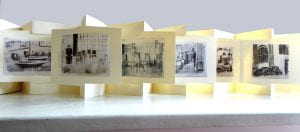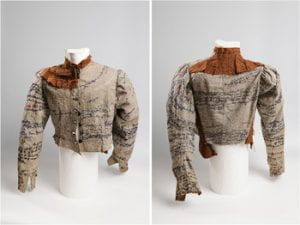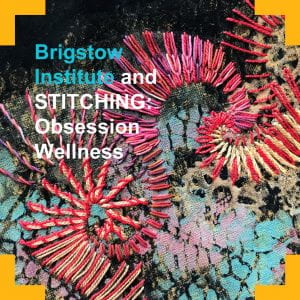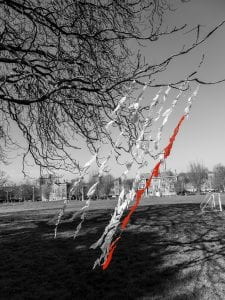
Anwyl Cooper-Willis at Glenside Hospital Museum
In 2016, artists’ collective alldaybreakfast successfully applied to Bristol City Council for funding to become artists in residence at the Glenside Hospital Museum. Our work involves engaging audiences and using that opportunity to develop our practice. We produced two exhibitions and a final performance over the year, with over 1,200 viewers and participants.
My work included devising graphs, derived from data on all admissions to the hospital from 1861-1900. I was interested the popular assumption that Victorian asylums such as that at Bristol were full of un-wed mothers and women surplus to requirements. The data told quite another story.
I made a graph in the form of silk rags on strings for the 2500 women admitted. Each rag represents ten women; red rags for those for whom childbirth or female problems were thought to be a contributing factor to admission; white where they were not. Hung outdoors the fragile rags fluttered in the breeze. About 10% of married women, 1% of singles, and 0.01% of widows had red rags.
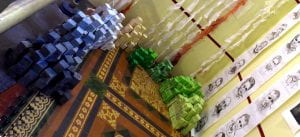
The next artwork represented the 5000 people admitted to the hospital and their outcomes. These were represented in 4x4cm wooden blocks, ten people to a block, green for those who were discharged, recovered or improved; grey for those who died in the asylum. The darker the colour the longer the stay. In this way, however the blocks are arranged, they still tell the same story. For example most people were discharged and within a year, but the longer the stay the more likely the person is to die in the hospital. To look at this population in another way, I also did a series of rapid brush drawings of patients, from photographs in the medical records. My aim was to show the patients’ humanity – they were really no different from ourselves -just troubled people. I also made a substantial number of prints and etchings inspired by images from the hospital, representing my involvement with the museum. And so, being also a bookmaker, I made a book to present it all.


